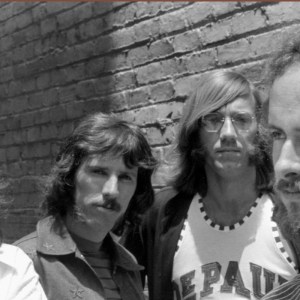British band The Who has been one of the most influential groups in modern rock and roll. Pioneering the use of electronic elements such as synthesizers, they helped define the new generation’s sound. Their unique take on music also led to the increased popularity of rock opera (they composed several, including Tommy and Quadrophenia). Though The Who is best remembered for groundbreaking songs such as “My Generation,” “Who Are You?” and “Baba O’Riley.”
Videos by American Songwriter
But like many bands, they also had songs that were underappreciated in their time. This was sometimes because of their collective refusal to bow to the demands of “popular” rock, choosing to adhere to their unique artistic vision instead. Many of these songs later gained widespread appreciation and have come to be considered among their best. These five deep cuts from The Who aren’t widely remembered but remain essential to their discography.
1. “Blue Red & Grey” — 1975
“Blue Red & Grey’, an understated track on The Who’s 1975 album, The Who by Numbers, is often overlooked in the band’s discography. Pete Townshend sings of life’s simple pleasures, accompanied by a sparse track of ukulele and horn. This simplicity might have made many people overlook “Blue Red & Grey.” But ultimately, its genius lies in its bare-bones, raw presentation.
Going through a period of suicidality, Townshend wrote the song as a coping mechanism. Later, he fought against putting it on the album, but other band members overruled him. The lyrics defy the concept of toxic positivity and instead emphasize the goodness in all life’s experiences, including the painful ones.
2. “New Song” — 1978
“New Song” came out in 1978 after more than a decade of The Who’s existence. By the end of the 1970s, rock ‘n’ roll was turning into something popular and commercialized. Pete Townshend’s lyrics are acutely aware of these pressures, weighing the conflict between remaining relevant and refusing to compromise his artistic integrity. The track was also noted for its unique instrumentals, which used new tech such as polyphonic synthesizers.
“This is a diatribe against the requirements of FM radio (at the time) for every band of the day to produce ‘clones’ of their earlier successful airplay hits,” said Townshend in the liner notes. “This was my signal to everyone that I had decided to deal a wonky deck full of theatrical parodies and anachronisms. Needless to say, the song didn’t get airplay, and neither did it make the critics happy.”
3. Tattoo — 1967
In some ways, The Who’s 1967 song “Tattoo,” released on their first album, The Who Sell Out, was ahead of its time. Though overshadowed by other songs on the album during its release, “Tattoo” has since been recognized for its musical and lyrical brilliance.
An exploration of insecurity, societal expectations, and the definition of masculinity, the song tells the story of two brothers. Wanting to prove their manhood, they get tattoos; however, their father beats one brother because his tattoo says “Mother.” “Tattoo” is brilliantly introspective and excels in its vulnerable, tongue-in-cheek storytelling about the insecurity of young men.
4. Naked Eye — 1974
Though first recorded in 1970, “Naked Eye” wasn’t released until The Who’s 1974 compilation album, Odds & Sods. Nevertheless, they played it regularly at their concerts throughout the decade’s first half. Subsequently, it was well-known to superfans and concertgoers but remained buried in their discography.
Many critics think “Naked Eye” is at its best when performed live. The sweeping instrumentals allow the band to stretch their vocal muscles in a way that isn’t quite at home in the studio. A skilled interweaving of the 1960s hippie era and 1970s harder rock, “Naked Eye” is a roaring, emotional ballad about love and distance.
5. The Punk & The Godfather — 1973
In 1973, The Who released their rock opera album, Quadrophenia. One song, “The Punk & The Godfather,” appeared on the album but was largely overshadowed by other tracks. It tells the story of Quadrophenia’s protagonist, Jimmy, going to see a band perform and realizing that the band members aren’t authentic in how they present themselves.
The song uses elements from The Who’s earlier music, including a quote from “My Generation” (1965). But its true artistry lies in the flashy, swelling musical style that lets the vocalists belt in The Who’s legendary form. Though “The Punk & The Godfather” underwhelmed critics, it became a crowd favorite at the band’s live performances.
Photo by Michael Ochs Archives/Getty Images
